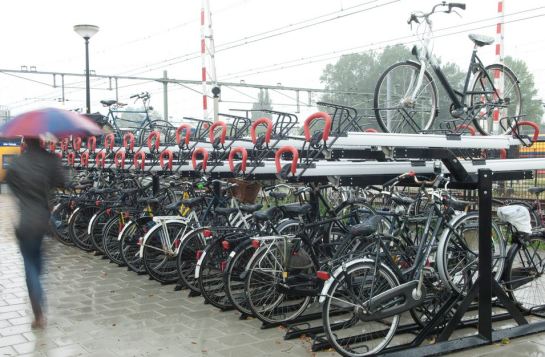
27% of all travel in the Netherlands are by bike (according to Pucher & Buehler, 2008), the highest ratio in the world. The average Dutch pedals 2,5 km daily (Spaniards just 0,1, as well as in the US…).
Over the last 20 years the use of bicycles has increased by 40% in Amsterdam, to reach 490.000 daily trips in 2012 and 2 million kilometers daily, and over 3.500 bikers per hour in the most used segments. There is a relevant congestion that generates a third of accidents. 56% of the severe traffic accidents imply a bike rider.
Amsterdam City plans to invest 57 million euros up to 2016 to improve the use of the bicycle. There will be 15 new km of red, high capacity, bike paths, and the main thoroughfares will be enlarged, giving as much priority as possible to cyclists. Up to 2020 there will be a coordinated investment of 120 million euros involving other administrations to solve the most conflictive nodes of the network, but the priority (90 millions) will be allocated to 38.000 new bike parking places (2.368 euros per spot). According to the city, the investment on bicycles is the most profitable for euro spent.
Just to compare investment magnitudes and the number of implied persons, I will use a Madrid example. The Cuatro Caminos underpass, opened in 2005 with a 540 m length (and a complex engineering to make the four lanes way cope with many buried infrastructures) has cost, according to the press, 25,7 million euros, to absorb 70.000 cars a day. If the 57 million euros in Amsterdam’s investment were to benefit just 30% of its bikers in 2012, this would mean some 147.000 daily trips, so the cost in euros/trip would be similar, but the CO2 and other greenhouse gases and pollutants emissions would be clearly down, as well as the associated nuisance. Besides, the Amsterdam investment should tackle congestion city-wide, while Cuatro Caminos is a point solution. Taking into account that building costs in the Netherlands are probably higher than in Madrid, a more adjusted intra-city comparison would be even more advantageous to the bike.
More data about cycling in the Netherlands at http://www.dutchcycling.nl/




Leave a comment